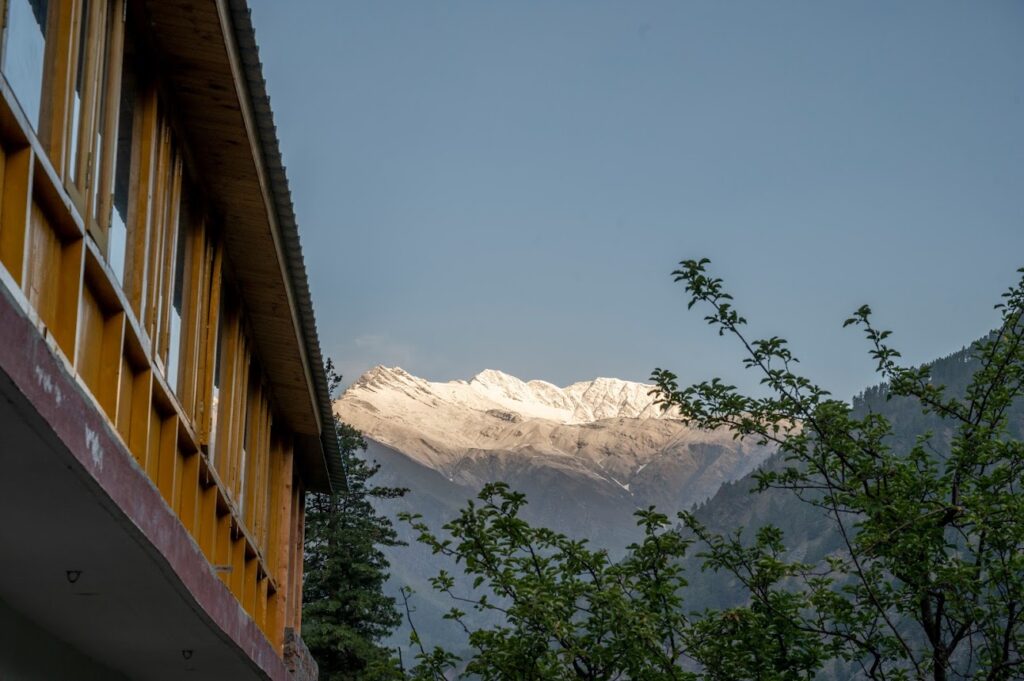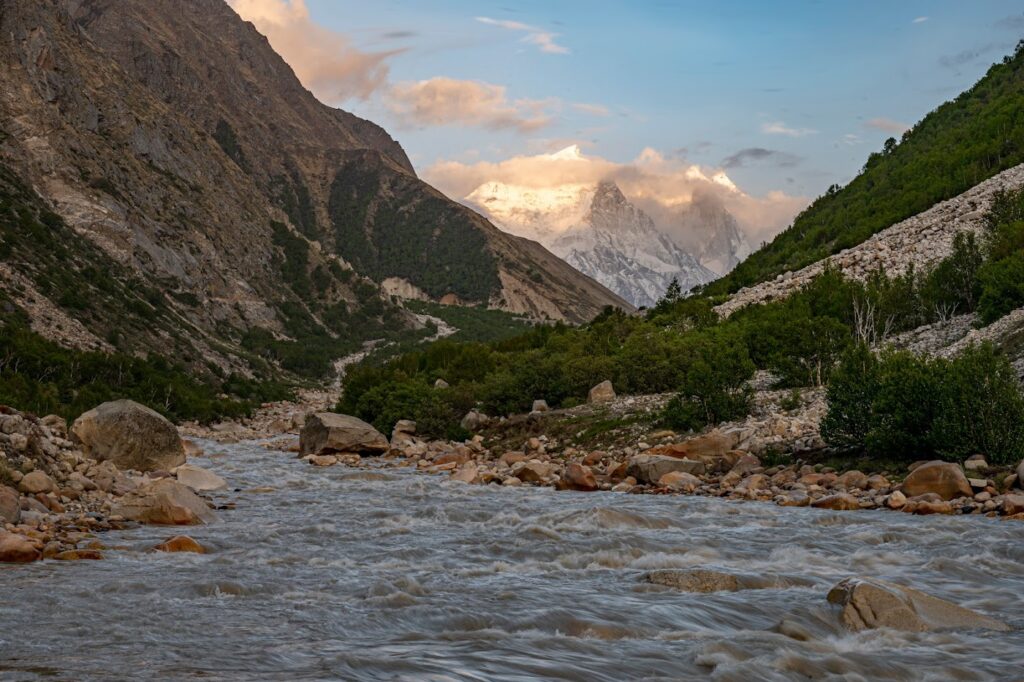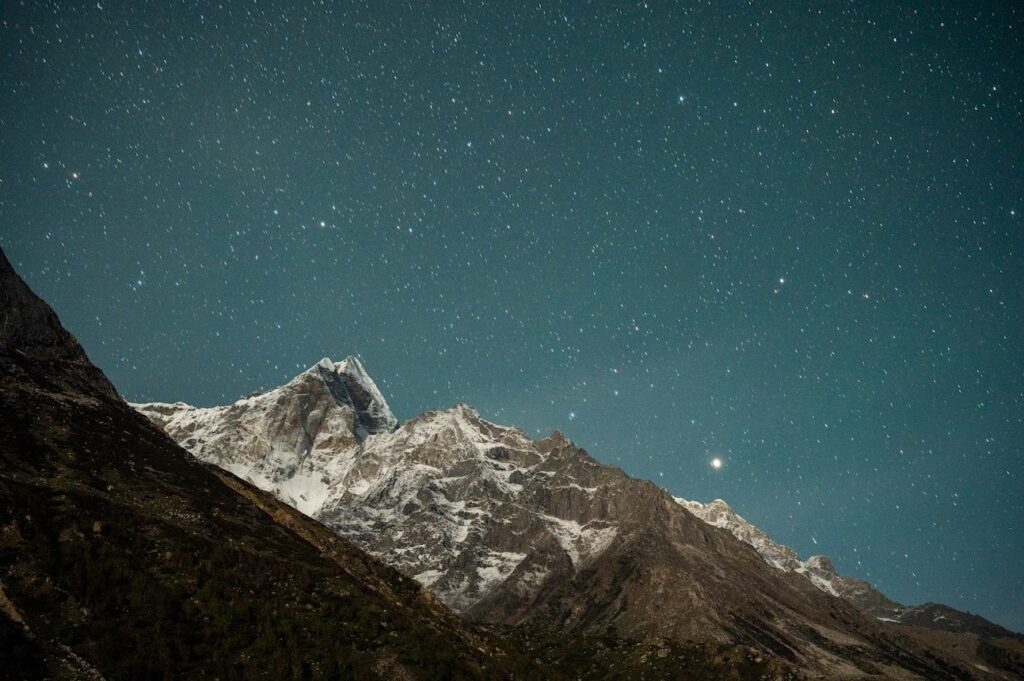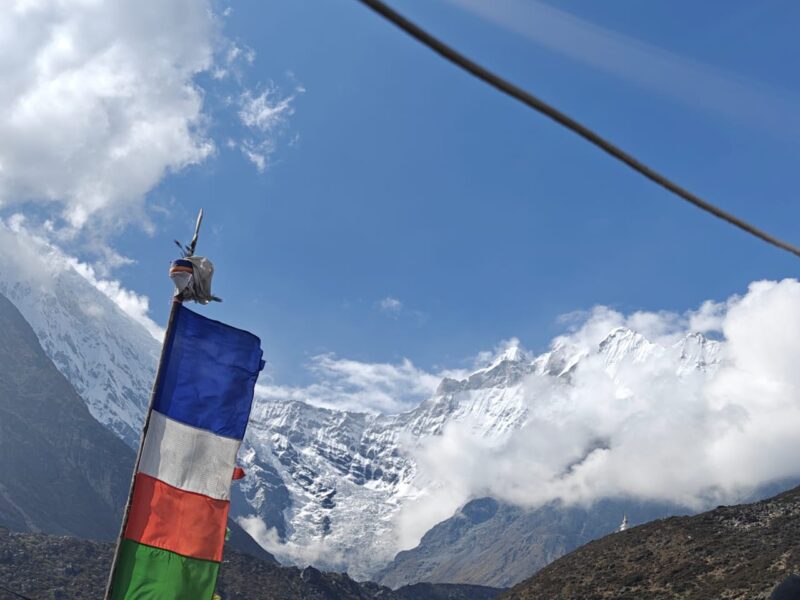In 2016, my family and I, fulfilled a long-cherished dream of mine, to complete the Char Dhaam Yatra in Uttarakhand, visiting Yamunotri, Kedarnath, Gangotri and Badrinath, in that order.
At Gangotri, an inspiration occurred to me to visit Gaumukh. Gangotri is widely known as the origin of the river Ganges and is accessible by road. But the actual source is further up at Gaumukh, which requires an arduous trek of 3-5 days. As it was not possible to take the family to Gaumukh, I postponed it to another day in the future. But once we returned from this memorable pilgrimage, we settled into to our daily routine, and years rolled by.
It was in April 2022 that both Saurabh and I, my fellow trekker to Namche in Nepal, deliberated on the possible destinations of our second trekking adventure and Gaumukh came as a flash to my mind.
After discussing with my relative Mr Badri Vijayaraghavan, a professional and experienced trekker, both me and Saurabh settled on Gaumukh and set out making all necessary enquiries. Someone suggested forming a seven-member team comprising two of us, three porters, one cook and a guide. We needed three porters, as this trek was comparatively tricky. We had to carry many essentials like food, sleeping bags, and tents for the night’s stay as there would be no inns, hotels or restaurants in the entire desolate stretch. It did look pretty adventurous theoretically to undertake this journey. Still, we were unaware of the actual hardships that lay ahead.
Day 1: Friday, May 20, 2022
Chennai – Dehradun
I flew to Dehradun. First, I went to Rishikesh to visit my cousin Pushpa Didi, who permanently resides in the Gita Bhawan ashram, in pursuit of her spiritual journey. As one who had undertaken the Gaumukh trek long back, she was naturally happy to learn about my plan, filling me with her positive vibes and motivation. It was so kind of her to give me so many items that I would require during my journey!
I also visited the Neelakanth temple, which is about 32 km from Rishikesh. We read in our sacred texts that once the Devas (Gods) and Asuras (demons) churned the ocean to obtain Amrita or the diving nectar. But many other things also came out in that churning, including the kaalkoot poison. People believe this temple was where Lord Shiva consumed that poison. I visited the temple to get the blessings of Lord Shiva once again-as I had done earlier on my trip to Nepal-for yet another adventurous journey.
Day 2: Saturday, May 21, 2022
Dehradun – Harsil
7.5 hours; 248 kms
The next day, I drove to Dehradun airport, picked up Saurabh and proceeded straight to Gangotri. By evening we reached a village called Harsil, also known for its apples.

Our guide informed us that a Britisher, Fedure E Wilson fell in love with Harsil for its natural beauty. He introduced apples to this area, eventually changing its economy. Harsil is just 20 km from Gangotri and worth a visit. Here the Baghirathi river cascades from the Himalayas, leaving one speechless. The Indian Army has a base in Harsil. We spent a good night in our hotel room.
Day 3: Trek Day 1: Sunday, May 22, 2022
Harsil – Gangotri – Chirbasa
3,545 m / 11,631 ft; 10 km; 6 hrs
We left for Gangotri after breakfast, in the morning. Gangotri is 99 km from Uttarkashi, the district headquarters. We reached Gangotri in two hours and met our five-member team. The porters were small Nepalese boys with no smiles on their faces. I learnt that they came from Nepal in search of work. Their physique is so muscular that they could carry twice their weight, enabling them to make more money per trip.
We were ready for the trek with all our gear. I took extra care, bringing my trekking boots and a backpack with a head torch for the night. I also carried a water bladder with a tube to sip the water, thermal wear and warm clothing. I kept a copy of the holy Bhagavad Gita, which Pushpa Didi had given me in Rishikesh. While the guide accompanied us, the porters and the cook left ahead of us to make preparations at the campsite. We carried a permit from the District Forest Officer, Uttarakhand, allowing us to undertake the trek.
We embarked on our first section, a 7-km walk in the mountains, which was to take around 5-6 hours. We did not wish to stop midway for a break. Our first stop was going to be Chirbasa.
Our mobile network slowly disappeared, and we were shocked when we realized that we would be without connectivity for the next few days. But, we hoped that at some later point, we might get connectivity.
This trek was more difficult than our previous one to the Namche village in Nepal. Unlike the latter, we were a bit scared this time because there was no sign of any civilisation like houses, inns, hotels or shops. On the contrary, our path was uneven, narrow and rocky, making the walk quite tricky.

But since it was alongside the river Bhagirathi, we saw some incredible scenery. The only thing we could hear was the sound of the flowing river splashing over the rocks. It seemed as if the river was in a great hurry to go to places.
Having walked non-stop for around 6 hours, I was keenly waiting for Chirbasa, our destination for the night. Chirbasa is at an altitude of 3,580 m. above sea level. There was still no sign of any civilisation. We passed through a small forest grove and a few small wooden bridges, which was quite interesting. At one point, we had to climb over vast boulders without any sign of a pathway. At 3 p.m., we finally reached Chirbasa, where we found only a tiny shop selling aerated drinks, biscuits, and hot beverages. Amid natural surroundings, some ten small beds were made available in a makeshift tent for travellers to rest. It was in a dense thicket of lofty pines, 9 km ahead of Gangotri. We walked down for 5 to 7 minutes, heading to the Bhagirathi river.
I was mentally unprepared to sleep in a tent. I was worried that I had not informed my family of my whereabouts.
I managed to send a note to the DFO through a returning trekker, requesting him to inform a member of my family that I was safe and sound and would be off the network for the next few days.
The continuous walk tired us, which was good, as we fell into a deep sleep. We had one tent to sleep in, another for the kitchen, and yet another was a makeshift toilet a little away from us.

As this place is a declared National Park, there is a strict rule to account for all the packets and bottles you have. You must tally the same when you return to Gangotri to avoid being penalised. That explained for why the place was so clean of pollutants. Also, it is worth mentioning the efforts of a teacher from Uttarkashi, Dr Harshvanti Bisht, who has been instrumental in the large-scale afforestation of this whole area.
She and her students have planted more than 5,000 trees in this area. Saurabh recalled that he had noticed comparatively less greenery in his earlier trek here in 2004.
The first night passed – I won’t say peacefully -as it was pretty scary. Getting into the sleeping bag is an art unknown to me.
Also, it was tough for me to share the small tent with another person and bend down fully to exit the tent twice a night to answer nature’s call. For that, I slept with my head torch fastened to my head.
What a beautiful experience! The midnight sky was clear and provided a real treat to my eyes as it was filled with an uncountable number of big and small stars. The sound of the river downstream was supplementing this never-seen-before spectacle. In the urban jungles of cities, if we look at the night sky (I don’t think we find time even for that), we cannot witness even a fraction of the sight I saw here.

Truly spectacular!
Waking up early in the morning, I went to the makeshift toilet. It sounds silly, but it was quite a task for me to use the long-forgotten Indian-style bathroom. The cook prepared hot tea and toast for us and later some porridge with the help of whatever limited facility he had.


